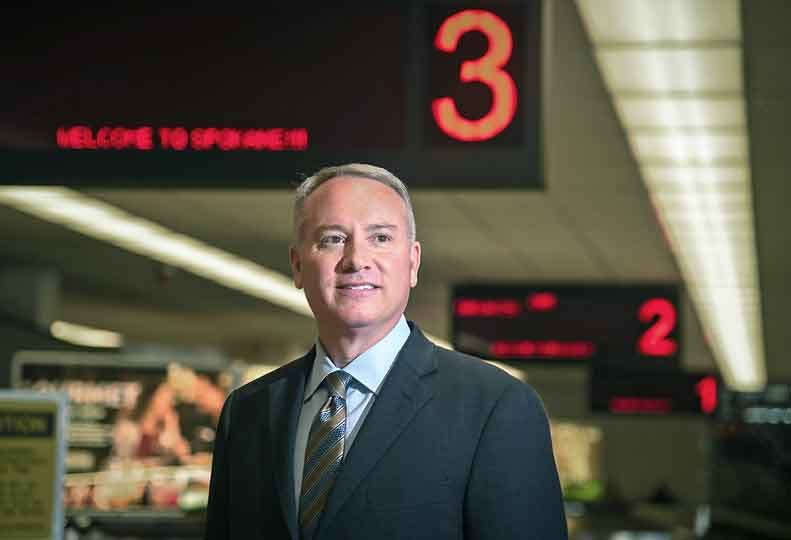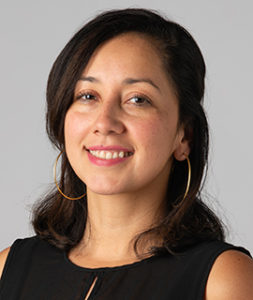
Home » Parting Thoughts with former Spokane Airports CEO Larry Krauter
Parting Thoughts with former Spokane Airports CEO Larry Krauter

February 27, 2025
Larry Krauter, former CEO of Spokane Airports, has departed for the Ohio-Kentucky border town of Hebron, Kentucky, for a similar role leading the Cincinnati/Northern Kentucky International Airport.
Krauter led Spokane Airports, which includes Spokane International Airport, Felts Field, and the Spokane International Airport Industrial Park, from 2011 until earlier this month. During his tenure, he led the organization through a period of significant growth, including record-setting passenger and cargo volumes. In 2024, the total number of passengers coming to and from Spokane totaled 4.26 million, up from 3.1 million in 2011. Total cargo volume topped 78,895 tons in 2022, up from 54,130 tons in 2011.
Krauter, 58, grew up in Ohio and received a degree in aviation from Ohio State University. During his 36-year career in aviation administration, Krauter has received a number of accolades, including the American Association of Airport Executives Distinguished Service Award in 2023. The award is one of the association’s highest which honors airport executives for an exemplary career and contributions to the airport industry.
The Journal caught up with Krauter on his last day as Spokane Airports CEO to discuss his tenure, career path, and why he chose to leave.
Why did you choose to go into aviation?
My father traveled quite a bit as I was growing up, so I found myself in airports and occasionally on airplanes during my formative years. I think that really made an impression on me, and I really became fascinated with airports, because I felt they were just so dynamic. There was just so much going on and it seemed so very interesting, and so that is what I decided to study and what I decided on as far as a profession.
Little kids usually want to become pilots. Why airport administration over flying an airplane?
Well, I was also interested in city and regional planning, as well as public service. When you combine all these passions, airport management is a natural outgrowth of all those interests.
What have been some of your highlights during your time here?
I would start with the people and the organization itself. I think that we have developed over the time that I have served here into a high-performance organization that is delivering very significant results for the regional economy. When I first arrived here, I saw a lot of upside and was excited about the potential of the Spokane International Airport and Felts Field Airport.
But I knew that we would have to have the kind of organization and the kind of people that could all work together, because we had a lot of things that needed to get done in order to get that vision.
What was the ultimate vision when you arrived?
The issue was to maximize the use of airport property, particularly for attracting aerospace-related businesses, advanced manufacturing-related businesses, and transportation and logistics-related businesses. As well as increasing air service, cargo activity, and passenger activity. Those were the primary areas, as well as reconstructing Felts Field, which had fallen into a state of disrepair. Getting the airport up to standards was very important as well.
What were the biggest obstacles in trying to achieve these goals?
Initially, we needed to increase our revenues. During my time here, our operating revenues have more than doubled. We did that by bringing the airport into what I will call a market-rate cost recovery model. We were charging market rates and doing things to recover all our costs.
The second part was making sure we were able to go out and compete effectively for available grant monies from the Federal Aviation Administration, the U.S. Department of Transportation, the Washington state Department of Transportation, and appropriations from the Washington state legislature.
What is the state of the aviation industry now?
We have experienced a very rapid and robust recovery from the pandemic. As a result, many airports are challenged to try and keep up with the rate of growth that is occurring. It becomes an issue of being able to plan, fund, and execute capital-improvement projects to address short-term growth, but also do it in a way that provides long-term solutions. What we (Spokane Airports) are building today is addressing short-term growth, but we’re building it in a manner that makes it easier to grow faster over the long term.
Why are you choosing to leave now?
I grew up in Ohio, so it’s a great opportunity for me to be closer to family that I have not been able to be as close to being out here in Spokane. But also, it’s a very unique professional challenge, and these jobs don’t come very often. Most of these jobs are recruited nationally, and in this particular case, it was an international recruitment.
What will you miss about the region?
We raised our daughter in Spokane. She came here just after she finished second grade and graduated from Lewis and Clark (High School). She had a great education here, and I think that is one of the things I found very special about our community. I think the education system is very good and prepared her to go on to college.
The other piece is obviously all the relationships I built because we can’t be successful alone. We’re successful because of the support that we receive from the broader community, particularly the business community, our city and county elected officials, and the PDA (Public Development Authority) as well.
That kind of teamwork is what’s really amazing about our community, when we put our minds to it and we work together, we can do truly amazing things that are significant in their importance to our regional economy. Whether that’s the growth of the airport or the medical schools, and other types of projects we’re seeing with soccer coming along and all the investments that are being made around that.
Do you have any advice for the person who will fill your shoes?
I think it’s going to be very important for my successor to continue to have very strong relationships at the local, state, and national levels concerning our ability to navigate the regulatory environment and funding opportunities, and make sure we can anticipate the future and things that can position the airport for continued long-term success.
Latest News Government Q&A Profiles
Related Articles
Related Products





![Brad head shot[1] web](https://www.spokanejournal.com/ext/resources/2025/03/10/thumb/Brad-Head-Shot[1]_web.jpg?1741642753)